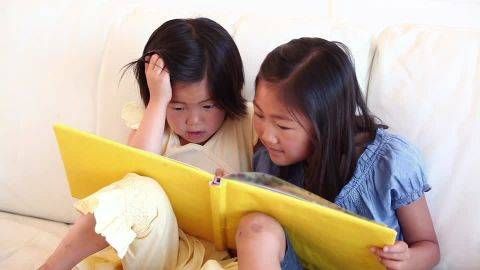
Children’s Books About the Immigrant Experience
Like many of you, the recent presidential elections have made me more determined than ever that my kids read immigrant stories and build empathy and love for those from different cultures, experiences, and beliefs. I’ve begun this list with thirty-six picture books and middle grade books about the immigrant experience, but there are so many more. I encourage all of us to seek out these books, request them at bookstores and libraries, and read them together with kids in classrooms and during mealtimes and at bedtime.
Have books to add? I would love if you would mention them in the comments. Additional book lists are included at the end of the post.
Picture Books
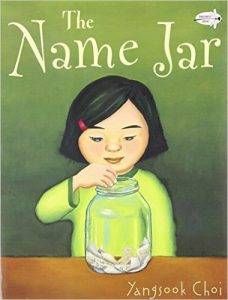
When Bilal and his sister Ayesha move with their family, they have to attend a new school. They soon find out that they may be the only Muslim students there. When Bilal sees his sister bullied on their first day, he worries about being teased himself, and thinks it might be best if his classmates didn’t know that he is Muslim. Maybe if he tells kids his name is Bill, rather than Bilal, then they would leave him alone. Mr. Ali, one of Bilal’s teachers and also Muslim, sees how Bilal is struggling. He gives Bilal a book about the first person to give the call to prayer during the time of the Prophet Muhammad. That person was another Bilal: Bilal Ibn Rabah. What Bilal learns from the book forms the compelling story of a young boy grappling with his identity.
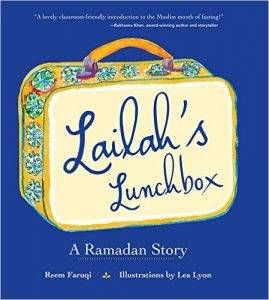
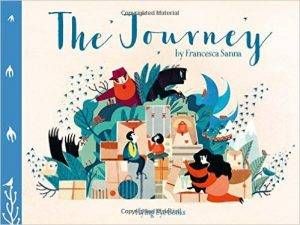
With haunting echoes of the current refugee crisis this beautifully illustrated book explores the unimaginable decisions made as a family leave their home and everything they know to escape the turmoil and tragedy brought by war. This book will stay with you long after the last page is turned.
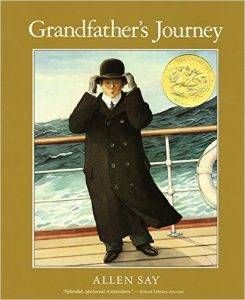
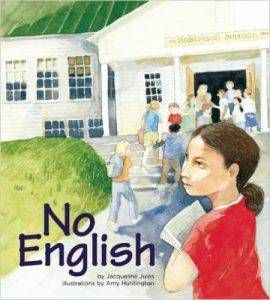
“No English” is all that Blanca, the new girl from Argentina, says. She spends her time drawing pictures instead of doing class work and that hardly seems fair to second-grader Diane. One misunderstanding follows another until Diane begins to see how afraid Blanca must feel in their classroom. Their teacher, Mrs. Bertram, helps her class understand that “different” is just different, not strange or weird. She encourages them to learn about Blanca’s home country. Diane must make things right, but how will she do that when they don’t speak the same language?
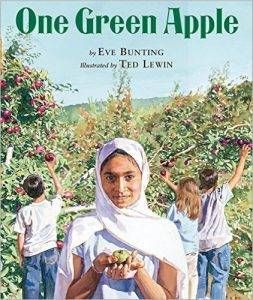
Farah feels alone, even when surrounded by her classmates. She listens and nods but doesn’t speak. It’s hard being the new kid in school, especially when you’re from another country and don’t know the language. Then, on a field trip to an apple orchard, Farah discovers there are lots of things that sound the same as they did at home, from dogs crunching their food to the ripple of friendly laughter. As she helps the class make apple cider, Farah connects with the other students and begins to feel that she belongs.
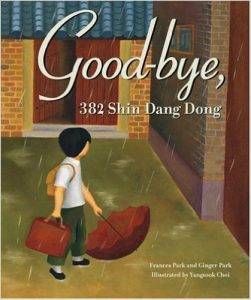
Jangmi, a young Korean girl, can’t bear the thought of leaving her home at 382 Shin Dang Dong and moving to America. This sensitive story follows Jangmi as she gradually adjusts to her new neighborhood in Massachusetts, meets a young friend and begins to fell comfortable once again.
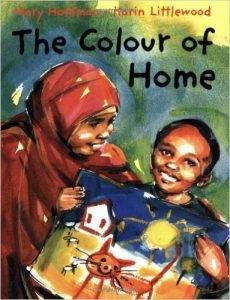
This remarkably moving picture book follows first-grader Hassan through his first few days at school. Hassan has only recently arrived in the United States after he and his family were forced to flee Somalia, and he deeply misses the colorful landscape of his former home in Africa. But with the help of his parents, an understanding teacher, and a school art project, Hassan finds that by painting a picture of his old home and sharing his story, his homesickness and the trauma of leaving a war-torn country are lessened. And he finds that there are many things to like about his new home in America.
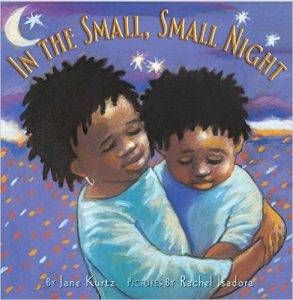
In the middle of the night the world can seem huge and frightening, especially when you’ve just moved far from home. On Abena and Kofi’s first night in America, it is late and it is dark and they are up worrying. What if a giant lizard or a slender-snouted crocodile crawled into their suitcases? What if the people in their new school laugh at them? What if they forget Grandmother and their cousins, now that they are an ocean away? But Abena knows a secret to help them. It is a secret that can make the world and the night seem small again. She reaches for her new flashlight and turns it on. She says to her little brother, Kofi, “Pretend this is the moon. Close your eyes.” And then she begins …
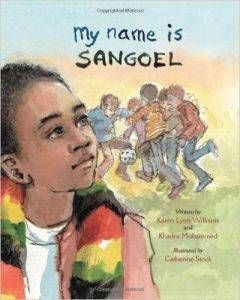
Sangoel is a refugee. Leaving behind his homeland of Sudan, where his father died in the war, he has little to call his own other than his name, a Dinka name handed down proudly from his father and grandfather before him. When Sangoel and his mother and sister arrive in the United States, everything seems very strange and unlike home. In this busy, noisy place, with its escalators and television sets and traffic and snow, Sangoel quietly endures the fact that no one is able to pronounce his name. Lonely and homesick, he finally comes up with an ingenious solution to this problem, and in the process he at last begins to feel at home.
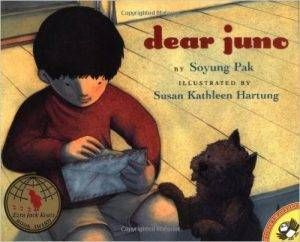
Juno’s grandmother writes in Korean and Juno writes in drawings, but that doesn’t mean they can’t exchange letters. From the photo his grandmother sends him, Juno can tell that she has a new cat. From the picture he makes for her, Juno’s grandmother can tell that he wants her to come for a visit. So she sends Juno a miniature plane, to let him know she’s on the way. This tender tale won the author an Ezra Jack Keats award, and is a perfect introduction to the concept of foreign cultures and far-off lands.
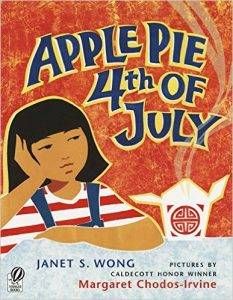
Shocked that her parents are cooking Chinese food to sell in the family store on an all-American holiday, a feisty Chinese American girl tries to tell her mother and father how things really are. But as the parade passes by and fireworks light the sky, she learns a surprising lesson.
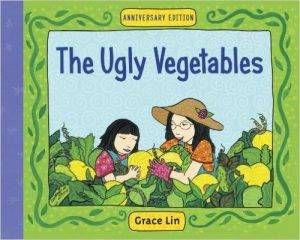
The neighbors’ gardens look so much prettier and so much more inviting to the young gardener than the garden of “black-purple-green vines, fuzzy wrinkled leaves, prickly stems, and a few little yellow flowers” that she and her mother grow. Nevertheless, mother assures her that “these are better than flowers.” Come harvest time, everyone agrees as those ugly Chinese vegetables become the tastiest, most aromatic soup they have ever known. As the neighborhood comes together to share flowers and ugly vegetable soup, the young gardener learns that regardless of appearances, everything has its own beauty and purpose.
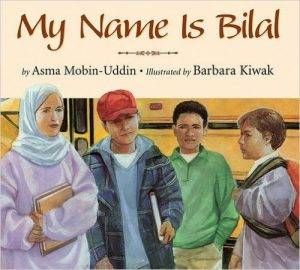
When Bilal and his sister Ayesha move with their family, they have to attend a new school. They soon find out that they may be the only Muslim students there. When Bilal sees his sister bullied on their first day, he worries about being teased himself, and thinks it might be best if his classmates didn’t know that he is Muslim. Maybe if he tells kids his name is Bill, rather than Bilal, then they would leave him alone. Mr. Ali, one of Bilal’s teachers and also Muslim, sees how Bilal is struggling. He gives Bilal a book about the first person to give the call to prayer during the time of the Prophet Muhammad. That person was another Bilal: Bilal Ibn Rabah. What Bilal learns from the book forms the compelling story of a young boy grappling with his identity.
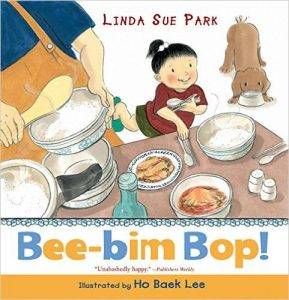
Bee-bim bop (“mix-mix rice”) is a traditional Korean dish. In bouncy rhyming text, a hungry child tells of helping her mother make bee-bim bop: shopping, preparing ingredients, setting the table, and sitting down to enjoy a favorite meal. The enthusiasm of the narrartor is conveyed in the whimsical illustrations, which bring details from the artist’s childhood in Korea to his depiction of a modern Korean-American family. The book includes Linda Sue’s own bee-bim bop recipe!
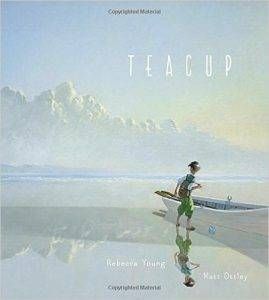
A boy must leave his home and find another. He brings with him a teacup full of earth from the place where he grew up, and sets off to sea. Some days, the journey is peaceful, and the skies are cloudless and bright. Some days, storms threaten to overturn his boat. And some days, the smallest amount of hope grows into something glorious. At last, the boy finds land, but it doesn’t feel complete . . . until another traveler joins him, bearing the seed to build a new home.
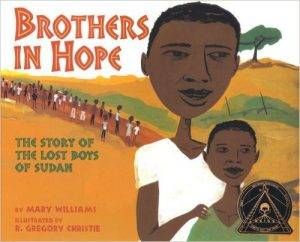
A young boy unites with thousands of other orphaned boys to walk to safety in a refugee camp in another country, after war destroys their villages in southern Sudan. Based on true events.
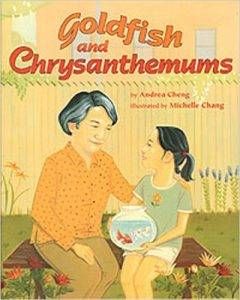
Young Nancy is helping Ni Ni (Grandma) in the kitchen when a letter arrives with bad news — her childhood home in China, with its beautiful garden pond filled with fish and ringed with chrysanthemums, is being torn down. Later that day, at the summer fair, Nancy spots a ball-tossing game, Win a Goldfish! Aiming carefully, she wins one, and then two. Now the question is how to use them to make Ni Ni feel better.
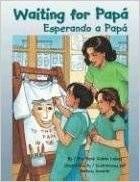
As Beto looks at the eight candles on his birthday cake, he knows that his wish is always the same. Beto wishes that he could be with his father every chance he gets. It has been three years since he and Mama left El Salvador. Lurking in his mind are the memories of the losses they suffered before leaving: the bombing of a factory, the
burning of the family home, the loss of all their possessions, but most of all, he thinks of the father that he has left behind. In the United States, Mama has found a job in a sewing factory making jeans, and they are trying to bring Papa to the United States with the help of an immigration lawyer. But this is only the beginning, and for Beto, it seems that his father cannot come fast enough.
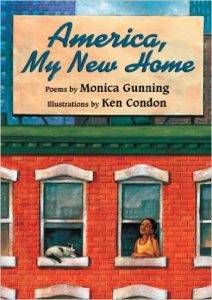
From her Caribbean island birthplace, a young girl carries a dream and journeys to a new land that is at once puzzling, frightening, and inspiring. In twenty-three compelling poems, Jamaican-born poet Monica Gunning tells her immigrant’s story with gentle humor, grace, and a child’s sense of wonder. She desribes a place where skyscrapers, rather than the moon, light the night; where people dress in woolens, ready for snow; where no one knows your name. Yet this same place offers exciting treasures: dizzying amusement park rides, stirring symphony concerts, flashy circus performers, towering cathedrals, and captivating art museums that speak to those who linger. Above all, this new land is place where “hope glows, a beacon / guiding ocean-deep dreamers / from storm surfs to shore.”
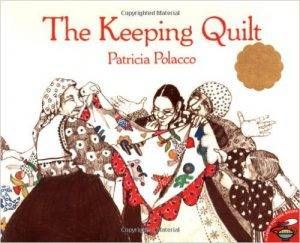
“We will make a quilt to help us always remember home,” Anna’s mother said. “It will be like heaving the family in backhome Russia dance around us at night. And so it was. From a basket of old clothes, Anna’s babushka, Uncle Vladimir’s shirt, Aunt Havalah’s nightdress and an apron of Aunt Natasha’s become The Keeping Quilt, passed along from mother to daughter for almost a century. For four generations the quilt is a Sabbath tablecloth, a wedding canopy, and a blanket that welcomes babies warmly into the world.
Middle Grade
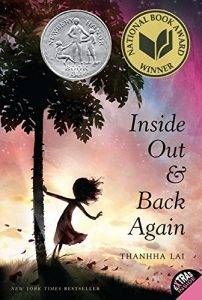
Hà has only ever known Saigon: the thrills of its markets, the joy of its traditions, and the warmth of her friends close by. But now the Vietnam War has reached her home. Hà and her family are forced to flee as Saigon falls, and they board a ship headed toward hope—toward America.
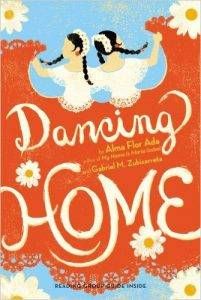
Mexico may be her parents’ home, but it’s certainly not Margie’s. She has finally convinced the other kids at school she is one-hundred percent American—just like them. But when her Mexican cousin Lupe visits, the image she’s created for herself crumbles. Things aren’t easy for Lupe, either. Mexico hadn’t felt like home since her father went North to find work. Lupe’s hope of seeing him in the United States comforts her some, but learning a new language in a new school is tough. Lupe, as much as Margie, is in need of a friend. Little by little, the girls’ individual steps find the rhythm of one shared dance, and they learn what “home” really means.
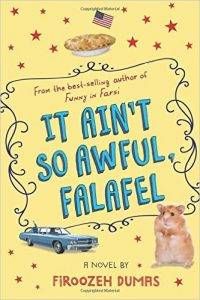
Zomorod (Cindy) Yousefzadeh is the new kid on the block . . . for the fourth time. California’s Newport Beach is her family’s latest perch, and she’s determined to shuck her brainy loner persona and start afresh with a new Brady Bunch name—Cindy. It’s the late 1970s, and fitting in becomes more difficult as Iran makes U.S. headlines with protests, revolution, and finally the taking of American hostages. Even mood rings and puka shell necklaces can’t distract Cindy from the anti-Iran sentiments that creep way too close to home.
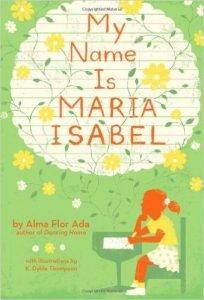
For María Isabel Salazar López, the hardest thing about being the new girl in school is that the teacher doesn’t call her by her real name. “We already have two Marías in this class,” says her teacher. “Why don’t we call you Mary instead?” But María Isabel has been named for her Papá’s mother and for Chabela, her beloved Puerto Rican grandmother. Can she find a way to make her teacher see that if she loses her name, she’s lost the most important part of herself?
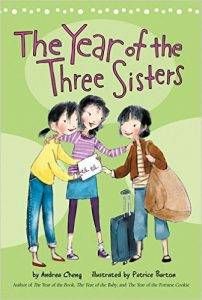
It’s summer time and twelve-year old Anna Wang is writing letters and exchanging English for Chinese lessons with her pen pal Fan in China. When Anna and her friend Andee decide to invite Fan to stay as an exchange student in Cincinnati, Fan responds in an unexpected way. Through this experience, Anna learns more about family values in today’s Chinese culture.
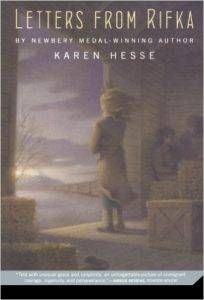
Rifka knows nothing about America when she flees from Russia with her family in 1919. But she dreams that in the new country she will at last be safe from the Russian soldiers and their harsh treatment of the Jews. Throughout her journey, Rifka carries with her a cherished volume of poetry by Alexander Pushkin. In it, she records her observations and experiences in the form of letters to Tovah, the beloved cousin she has left behind. Strong-hearted and determined, Rifka must endure a great deal: humiliating examinations by doctors and soldiers, deadly typhus, separation from all she has ever known and loved, murderous storms at sea, detainment on Ellis Island–and is if this is not enough, the loss of her glorious golden hair. Based on a true story from the author’s family, Letters from Rifka presents a real-life heroine with an uncommon courage and unsinkable spirit.
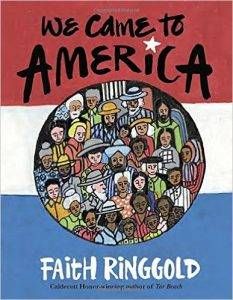
From the Native Americans who first called this land their home, to the millions of people who have flocked to its shores ever since, America is a country rich in diversity. Some of our ancestors were driven by dreams and hope. Others came in chains, or were escaping poverty or persecution. No matter what brought them here, each person embodied a unique gift—their art and music, their determination and grit, their stories and their culture. And together they forever shaped the country we all call home.
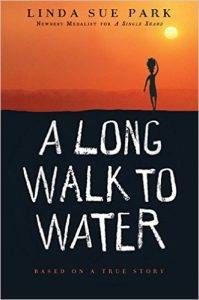
The New York Times bestseller A Long Walk to Water begins as two stories, told in alternating sections, about two eleven-year-olds in Sudan, a girl in 2008 and a boy in 1985. The girl, Nya, is fetching water from a pond that is two hours’ walk from her home: she makes two trips to the pond every day. The boy, Salva, becomes one of the “lost boys” of Sudan, refugees who cover the African continent on foot as they search for their families and for a safe place to stay. Enduring every hardship from loneliness to attack by armed rebels to contact with killer lions and crocodiles, Salva is a survivor, and his story goes on to intersect with Nya’s in an astonishing and moving way.
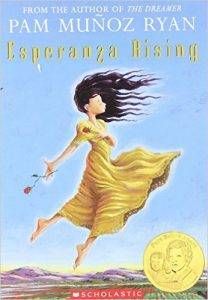
Esperanza thought she’d always live with her family on their ranch in Mexico–she’d always have fancy dresses, a beautiful home, and servants. But a sudden tragedy forces Esperanza and Mama to flee to California during the Great Depression, and to settle in a camp for Mexican farm workers. Esperanza isn’t ready for the hard labor, financial struggles, or lack of acceptance she now faces. When their new life is threatened, Esperanza must find a way to rise above her difficult circumstances–Mama’s life, and her own, depend on it.
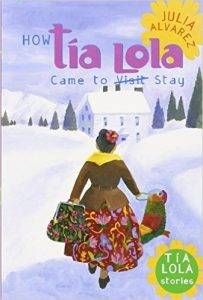
Moving to Vermont after his parents split, Miguel has plenty to worry about! Tía Lola, his quirky, carismática, and maybe magical aunt makes his life even more unpredictable when she arrives from the Dominican Republic to help out his Mami.
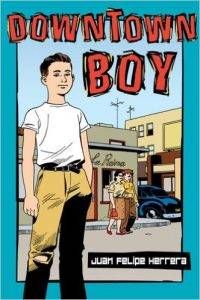
Juanito Paloma, his mother Lucha, and his elderly father Felipe, are a tiny family who, after years of working in the fields of California’s Central Valley, move to San Francisco’s Latin Mission District to live with relatives. Juanito longs to be in one place, rather than “going, going, going,” and pines for the love of his often-absent father. This family story of growing up Latino will resonate with readers of all backgrounds.
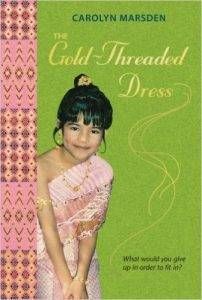
In Thailand she was named Oy, but here in America the teachers call her Olivia. Other things are not so easy to change, however. When Oy draws a portrait of herself with brown hair and eyes as round as coins, her classmate Frankie makes fun of her and calls her Chinese. And the popular girl Liliandra barely speaks to her, until she learns that Oy has something very special: a Thai dancing dress from her grandmother, shimmering with pink silk and golden threads, that makes her look like a princess. Will Oy risk shaming her family to win Liliandra’s approval – and be part of the club she has envied from afar?
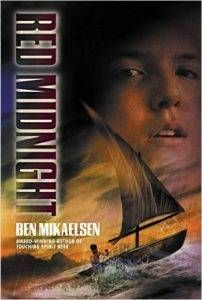
When guerrilla soldiers strike Santiago’s village, they destroy everything in their path — including his home and family. Santiago and his four-year-old sister escape, running for their lives. But the only way they can be truly safe is to leave Guatemala behind forever. So Santiago and Angelina set sail in a sea kayak their Uncle Ramos built while dreaming of his own escape. Sailing through narrow channels guarded by soldiers, shark-infested waters, and days of painful heat and raging storms, Santiago and Angelina face an almost impossible voyage hundreds of miles across the open ocean, heading for the hope of a new life in the United States.
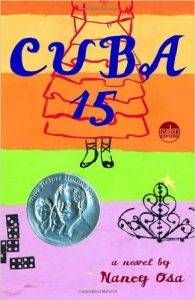
Violet Paz has just turned fifteen, a pivotal birthday in the eyes of her Cuban grandmother. Fifteen is the age when a girl enters womanhood, traditionally celebrating the occasion with a quinceañero. But while Violet is half Cuban, she’s also half Polish, and more importantly, she feels 100% American. Except for her zany family’s passion for playing dominoes, smoking cigars, and dancing to Latin music, Violet knows little about Cuban culture, nada about quinces, and only tidbits about the history of Cuba. So when Violet begrudgingly accepts Abuela’s plans for a quinceañero–and as she begins to ask questions about her Cuban roots–cultures and feelings collide. The mere mention of Cuba and Fidel Castro elicits her grandparents’sadness and her father’s anger. Only Violet’s aunt Luz remains open-minded. With so many divergent views, it’s not easy to know what to believe. All Violet knows is that she’s got to form her own opinions, even if this jolts her family into unwanted confrontations. After all, a quince girl is supposed to embrace responsibility–and to Violet that includes understanding the Cuban heritage that binds her to a homeland she’s never seen.
More resources:
The EMIERT Children’s Committee has a wonderful list posted here.
BRYCS also has a great list for the immigrant/refugee experience here.

















